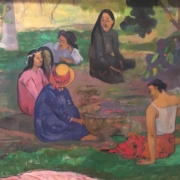Repetition in time and microtransformations Ten years’ work with a group of anorexic and bulimic patients
Abstract
I consider these years of working with anorexic and bulimic groups above all, have allowed me to be in contact with the repetitions among patients, and have also allowed me to re-examine many of the clinical and theoretical processes; depending on whether I have utilized them in an integral form or mixed them in an unconfused manner, have permitted me to get away from rigid chains enabling me to get closer to the enigmatic world of Read more

